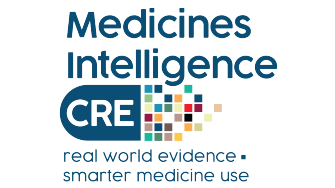
Background
The Medicines Intelligence (MedIntel) Data Platform is an anonymised enduring data platform, established to undertake population-based studies examining the use, safety and (cost)effectiveness of prescribed medicines.
Population spine
The MedIntel Data Platform cohort comprises 7.4 million unique Medicare-eligible persons (ascertained from the Medicare Consumer Directory) who were aged ≥18 years and resided in NSW at any time from 1 January 2005 until 31 December 2020. The cohort will be updated annually.
Linkage and data collections
The Australian Institute of Health and Welfare (AIHW) and the NSW Centre for Health Record Linkage (CHeReL) undertook the linkage using best practice privacy preserving protocols. The content data comprised Commonwealth and New South Wales routinely collected health data (see list below).
- Pharmaceutical Benefits Scheme (2002-2022)
- Medicare Benefits Schedule (2002-2022)
- Herceptin Program (2001-2015)
- National Death Index - Fact of death (2002-2022)
- National Death Index - Cause of Death (2002-2020)
- NSW Admitted Patient Data Collection (2002-2022)
- NSW Emergency Department Data Collection (2005-2022)
- NSW Cancer Registry (1972 – 2019)
Ethics
This research program has ethical approval from: (1) AIHW Human Research Ethics Committee (AIHW HREC) (approval number EO2021/1/1233); (2) NSW Population and Health Services Research Ethics Committee (PHSREC) (approval number 2020/ETH02273). Individual research projects conducted under this ethical approval require the submission of an amendment to the PHSREC along with an AIHW s29 form, for each person requiring data access, prior to commencement (approval within 4-8 weeks).
Data storage
The data are housed in the Secure Unified Research Environment (SURE), managed by the Sax Institute. SURE is a safe setting offering data controls meeting the highest data governance and security requirements. Housing the data in SURE adheres to the Five Safes framework—safe people, projects, settings and outputs. All access and data analyses are via the SURE.
If you wish to access the MedIntel Data Platform you will need to work with the MedIntel team to:
- Discuss project feasibility and alignment with the HREC approval;
- Submit a one-page Expression of Interest using a standard template;
- Agree on project resourcing and costs;
- Submit a PHSREC (and AIHW s29) ethics amendment using a standard template;
- Apply for a SURE workspace and complete SURE training.
Contact details:
For all inquiries, documentation and templates please contact the Data Manager, Medicines Intelligence Research Program, Melisa Litchfield, opens in a new window.
Funding
The establishment of the MedIntel Data Platform was funded by the UNSW Research Infrastructure Scheme and the NHMRC Centre of Research Excellence in Medicines Intelligence.
Costing Model
Please contact the Data Manager, Medicines Intelligence Research Program, Melisa Litchfield.
HMA-EMA Catalogues of real-world data sources and studies
The MedIntel Data Platform has now been included in the European Medicines Agency EMA-HMA Catalogue of real-world data sources. The HMA-EMA Catalogues are repositories of metadata collected from real-world data (RWD) sources and RWD studies. They are intended to help regulators, pharmaceutical companies and researchers to identify and use such data when investigating the use, safety and effectiveness of medicines.
You can find the MedIntel Data Platform data source record by clicking on the link, opens in a new window.
Publications
See details below of publications from research projects using the MedIntel Data Platform.
